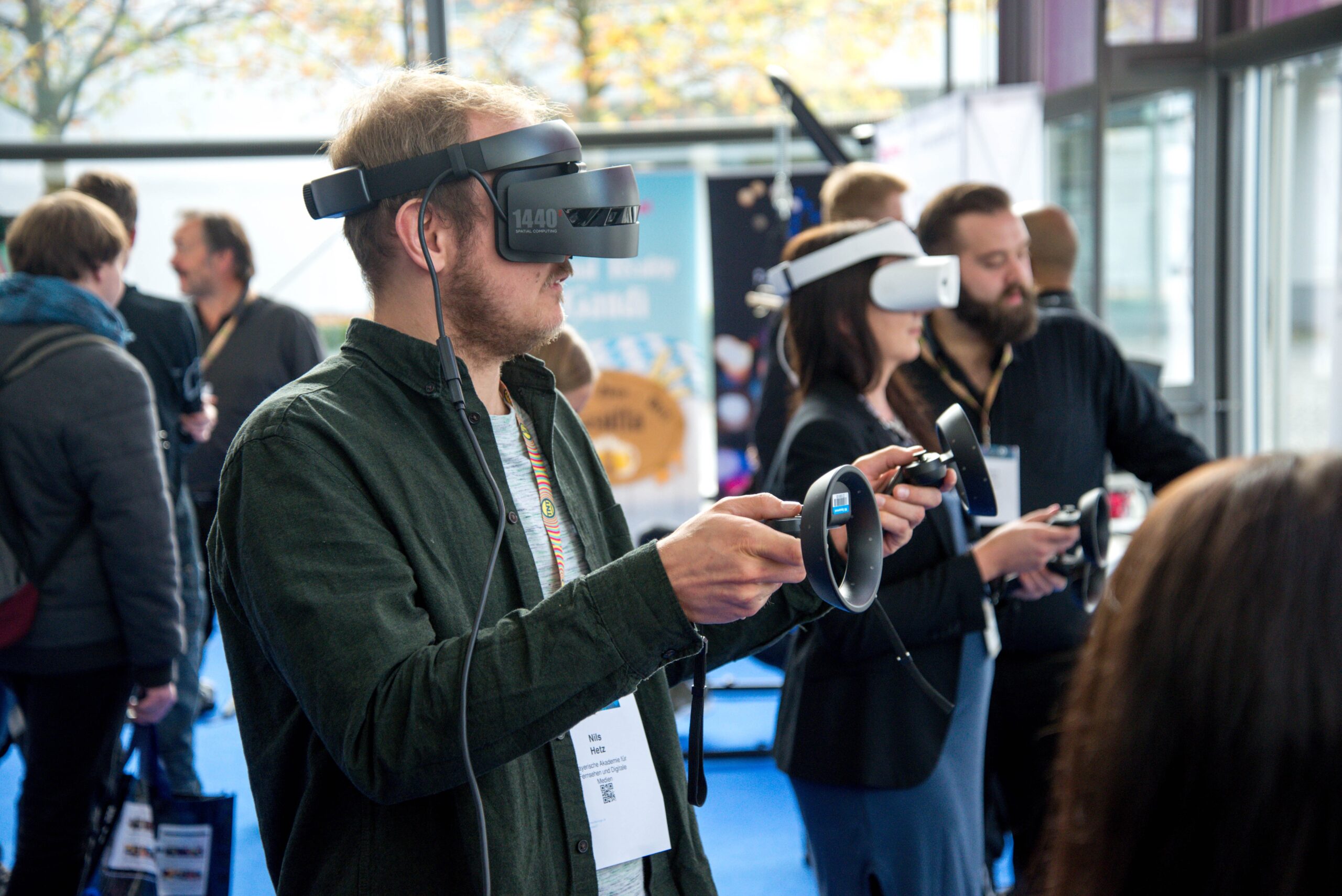Introduction
In an era where virtual reality merges with our physical world, the metaverse is no longer a fragment of sci-fi imagination but a burgeoning reality. Web developers are on the front lines, crafting the interfaces and experiences that will guide users through these expansive digital universes. This article delves into the future trends of web development within the metaverse, bridging the gap between our current digital landscapes and the infinite worlds on the horizon.
Spatial Web and 3D Interfaces
The spatial web is a new way of interacting with the internet, using three-dimensional (3D) elements and interfaces. It is still under development, but it has the potential to revolutionize the way we browse and use the web.
One of the key benefits of the spatial web is that it can be more immersive and engaging than traditional 2D web pages. This is because 3D interfaces can provide a more natural and intuitive way to interact with information. For example, you could use a 3D interface to explore a virtual product or environment before you buy it, or to visualize complex data in a way that is easier to understand.
Another benefit of the spatial web is that it can be more accessible to people with disabilities. For example, people with visual impairments can use 3D interfaces to navigate the web using audio or haptic feedback.
Tools like Three.js and A-Frame are making it easier for developers to create immersive spatial web experiences. Three.js is a JavaScript library for creating 3D graphics in the browser. A-Frame is a framework built on top of Three.js that makes it easier to create 3D scenes and experiences.
The spatial web has the potential to revolutionize a wide range of industries, including education, e-commerce, gaming, and navigation. In the future, we could see students attending virtual classrooms, customers visiting virtual shopping malls, and people taking virtual vacations. The possibilities are endless.

Web3 and Decentralized Networks
Web3 is a vision for a new, decentralized internet built on blockchain technology. In Web3, users will have more control over their data, identities, and transactions, and will be less reliant on centralized entities.
One of the key benefits of Web3 is that it can help to reduce the power of centralized intermediaries. For example, in today’s internet, we rely on centralized platforms like Google and Facebook to store our data and provide us with access to services. This makes us vulnerable to censorship and other forms of abuse.
In Web3, our data and identities will be stored on decentralized networks, such as blockchain networks. This means that we will have more control over our own information and will be less reliant on centralized entities.
Another benefit of Web3 is that it can enable new types of applications and services. For example, decentralized finance (DeFi) applications allow users to borrow, lend, and trade assets without the need for a traditional bank or other financial institution.
Web3 is still under development, but it has the potential to revolutionize the way we use the internet. By decentralizing control of the internet, Web3 can make it more democratic and secure, and it can enable new types of applications and services that are not possible with today’s centralized internet.

AR-Enhanced Web Experiences
Augmented reality (AR) is a technology that overlays digital information onto the real world. In recent years, AR has become increasingly integrated into web development, enabling new and innovative user experiences.
One of the most common applications of AR on the web is virtual try-ons. AR allows users to try on clothes, glasses, and other products virtually before they buy them. This can help users to make more informed purchasing decisions and reduce the likelihood of returns.
Another popular application of AR on the web is interactive 3D advertisements. AR allows advertisers to create more engaging and immersive ads that can capture users’ attention and drive sales.
In addition to virtual try-ons and interactive 3D advertisements, AR can also be used for a variety of other purposes on the web, such as:
- – Providing product information and instructions
- – Educational experiences
- – Gaming and entertainment
- – Navigation and wayfinding
AR-enhanced web experiences are still in their early stages, but they have the potential to revolutionize the way we interact with the web. By making web pages more immersive and engaging, AR can help businesses to attract new customers, increase sales, and improve customer satisfaction.

AI-Powered Personalization
AI-powered personalization is the use of artificial intelligence to create customized user experiences on the web. AI algorithms can analyze user behavior, such as browsing history, search queries, and purchase history, to identify patterns and preferences. This information can then be used to personalize the web experience for each user, such as by recommending relevant products, content, and services.
AI-powered personalization has a number of benefits for both users and businesses. For users, it can lead to a more relevant and engaging web experience. For businesses, it can lead to increased customer satisfaction, loyalty, and revenue.
Here are a few examples of how AI-powered personalization is being used today:
- – E-commerce websites: E-commerce websites can use AI-powered personalization to recommend products to users based on their past purchases and browsing history.
- – Streaming services: Streaming services can use AI-powered personalization to recommend movies and TV shows to users based on their viewing history and ratings.
- – News websites: News websites can use AI-powered personalization to recommend articles and videos to users based on their interests and reading habits.
AI-powered personalization is still in its early stages of development, but it has the potential to revolutionize the way we interact with the web. By creating customized experiences for each user, AI-powered personalization can make the web more relevant, engaging, and useful for everyone.

Edge Computing in Web Development
Edge computing is a distributed computing paradigm that brings computation and data storage closer to the sources of data, i.e., the edge of the network. This can significantly improve performance for web applications, especially those that require real-time data processing or low latency.
In the context of web development, edge computing can be used to:
- – Reduce latency: By processing data closer to the user, edge computing can reduce latency, which can improve the user experience and performance of web applications.
- – Improve performance: Edge computing can also improve performance by offloading processing from the server to the edge. This can free up resources on the server and improve the performance of other web applications.
- – Reduce bandwidth usage: Edge computing can also reduce bandwidth usage by processing data closer to the source. This can be especially beneficial for web applications that use a lot of data, such as streaming video or gaming applications.
Edge computing is still in its early stages of development, but it has the potential to revolutionize web development. By making web applications faster, more efficient, and more reliable, edge computing can help businesses to improve their customer experience and increase their revenue.

Conclusion
The future of web development holds an array of exciting possibilities, with technologies like the metaverse, Web3, AR, AI, and edge computing leading the way. Web developers are not merely observers of this evolution but active participants, scripting the codes that will navigate us through the next dimensions of digital interaction.
As these trends unfold, staying ahead means continuous learning, adapting, and innovating, ensuring that the digital worlds we craft are as boundless and inclusive as the physical world we inhabit.
